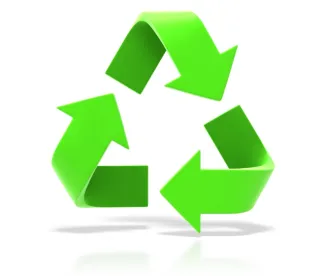The United States Environmental Protection Agency (EPA) is cracking down on alleged sham recycling with the issuance of a final “Definition of Solid Waste” Rule. The rule aims to reestablish hazardous waste restrictions eased by the Bush administration in 2008. Rulemaking on the Definition of Solid Waste, Pre-Publication version (Dec. 9, 2014) (to be codified at 40 CFR Parts 260 and 261) (the Rule). The 2008 rule exempted hazardous secondary materials that would be reclaimed from the definition of solid waste. Doing so, according to EPA, effectively de-regulated 1.5 million tons of materials, such as arsenic, benzene, trichloroethylene, lead and mercury. Environmental groups and EPA claim that the deregulation resulted in third-party recyclers over-accumulating materials, increasing the risk of accidents and environmental releases. Consequently, the Rule redefines certain materials as hazardous waste and implements stricter controls on facilities and processes.
The new Rule has the potential to affect numerous industries because it changes what may be recycled, and how, without being subject to hazardous waste requirements. EPA has grouped the regulatory changes into six major categories, outlined below.
1. Exclusion for hazardous secondary materials that are legitimately reclaimed under the control of the generator. The Rule retains the exclusion from solid waste for companies who recycle the waste they generate.
2. Verified Recycler Exclusion. The Rule will also replace the transfer-based exclusion with an exclusion for verified recyclers reclaiming hazardous materials. A more restrictive framework for generators will result, as the responsibility shifts to the generator to ensure that it is sending hazardous secondary materials only to a recycler or intermediate facility that has obtained the proper RCRA permit or solid waste variance. The solid waste variance procedure replaces a “reasonable efforts” environmental audit process in the 2008 Rule and requires EPA or state involvement before recycling operations begin.
3. Remanufacturing Exclusion. The Rule excludes from the definition of hazardous waste certain higher-value hazardous spent solvents that are remanufactured into commercial-grade products. This new exclusion, according to EPA, will encourage sustainable materials management and reduce the environmental effects of raw materials use. Facilities may submit a rulemaking petition to request the addition of other higher-value hazardous secondary materials to the remanufacturing exclusion.
4. Prohibition of Sham Recycling and Revisions to the Definition of Legitimacy. The Rule tightens the standards required to show “legitimate recycling,” now mandating the following:
-
The hazardous secondary material must provide a useful contribution to the recycling process or product;
-
The recycling process must produce a valuable product or intermediate;
-
The hazardous secondary material must be managed as a valuable commodity; and
-
The recycled product must be comparable to a legitimate product or intermediate.
The Rule confirmed the exclusion from solid waste for commodity-grade recycled products, such as scrap metal, and in-process recycling.
5. Revisions to Solid Waste Variances and Non-Waste Determinations. Companies may seek a variance to conduct recycling or reclamation, or they may apply for a non-waste determination on a particular waste stream or product.
6. Deferral on Revisions to Pre-2008 Recycling Exclusions. The new Rule declines to supersede pre-2008 recycling exclusions and exemptions. Thus, any existing facilities operating under a pre-2008 solid waste exclusion determination are not subject to a re-determination unless the state chooses to revisit the regulatory determination. However, all facilities will have to comply with the recordkeeping requirements for speculative accumulation and legitimate recycling.
Although the Rule will become effective six months after publication, most states (those that are authorized to enforce RCRA) must individually adopt the Rule before it becomes effective in those States. Such states will have until July 1, 2016 to adopt the new federal rules, though a one-year extension may be available if a statutory amendment is needed. Compliance will likely require a significant investment in proactive planning and new protocols.


 />i
/>i

